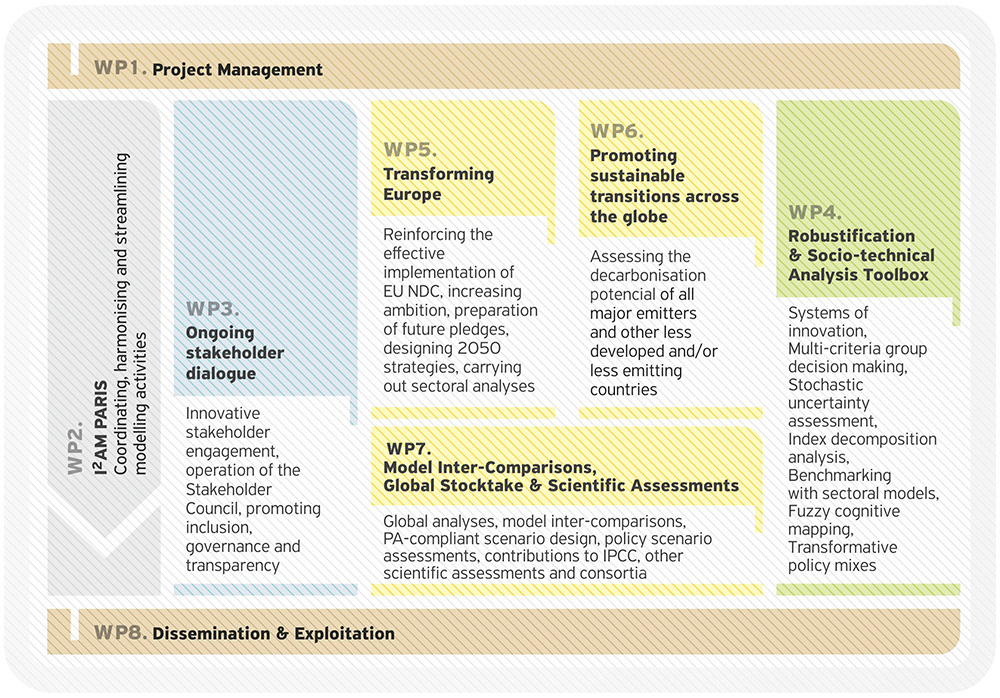The I2AM PARIS platform
A separate component includes all tasks associated with the design, development and operation of the I2AM PARIS platform as well as with the harmonisation of modelling input and output, and the coordination of all modelling activities, thereby constituting a cross-cutting work package throughout the project. From policymakers to modellers and other researchers, the platform represents the science-policy interface and seeks to bridge a critical gap between science, on the one hand, and the policymaking community and other stakeholder groups, on the other.
Dynamic stakeholder engagement
Equally important for PARIS REINFORCE is the stakeholder engagement module: stakeholders will essentially drive all modelling and policy support processes, by actively participating in all stages of the project. These include defining the policy questions, modelling needs and parameters as well as the specifications and requirements of the I2AM PARIS platform, of which they will be the end users. The ongoing stakeholder dialogue begins with the identification, analysis and selection of the project’s key stakeholders, establishes the project’s Stakeholder Council, and maintains an exhaustive and ongoing dialogue, in which relevant stakeholder groups are placed at the core of all scientific processes, in line with the Talanoa dialogue.
Robustification
In order to enhance the robustness of modelling outcomes and resulting policy prescriptions, the PARIS REINFORCE paradigm will also consider the many implications of the envisaged transitions, around innovation systems, financing requirements, as well as the co-benefits and trade-offs with other policy goals such as the UN’s Sustainable Development Goals. These multiple dimensions will be jointly considered using a variety of state of the art tools. A robustification module is therefore dedicated to producing more meaningful, robust and effective outcomes: it helps inform modelling activities, by bridging the gap between science and stakeholders and carrying out extensive socio-technical analyses; as well as by integrating modelling exercises with index decomposition, benchmarking, uncertainty assessment and regret analyses, towards improving the robustness of modelling outcomes.
Modelling analyses & inter-comparisons
Three dedicated modules of PARIS REINFORCE refer to the core aim of the project and mobilise all respective models, robustness tools and stakeholder engagement activities towards: (a) supporting climate policies, by reinforcing the effective implementation of NDCs, designing future action pledges, mid-century strategies and increasing long-term ambition, at the EU and national level of all Member States and other European countries; (b) carrying out respective analyses of NDCs and future strategies of all other major emitters and selected, representative less developed countries outside Europe; and (c) promoting equitable climate action, by carrying out global analyses and model inter-comparisons, and contributing to the effective design of the GST, to IPCC’s 6th Assessment Cycle and other scientific assessments/modelling consortia.
Effective communication, dissemination and exploitation
Finally, a separate work package includes all communication, dissemination and exploitation activities, ensuring that the project results are clearly and comprehensively communicated to policymakers; inform respective processes; and are further exploited by the research community and stakeholders.
